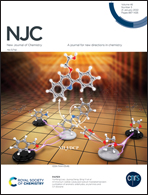Porous single-crystalline vanadium nitride octahedra with a unique electrocatalytic performance†
Abstract
In contrast to irregular polycrystals, the orderly structure and the clear surface atomic termination layer of porous single crystals demonstrate unique physical and chemical properties, including excellent electrical conductivity, an extremely large specific surface area, a small grain boundary area and low interfacial resistance. This could provide sufficient well-defined active sites for improving the catalytic activity and stability. Here, we grow well-shaped porous single-crystalline vanadium nitride octahedra and irregular porous polycrystalline vanadium nitride from non-porous NH4V4O10 single-crystal precursors. These well-shaped porous single-crystalline materials show a superior hydrogen evolution reaction (HER) performance. When used as HER catalysts, the overpotential of the VN porous single crystal is only 74.67 mV at a current density of 10 mA cm−2. By contrast, the overpotential of the irregular VN porous polycrystal is 150.66 mV under the same experimental conditions, which demonstrates the unique nature of the porous single-crystalline octahedron material. In contrast to traditional irregular polycrystals, this paper inspires the construction of porous single-crystalline materials with a crystal structure of long-range order of in the micron range for significantly improving the electrocatalytic performance.



 Please wait while we load your content...
Please wait while we load your content...